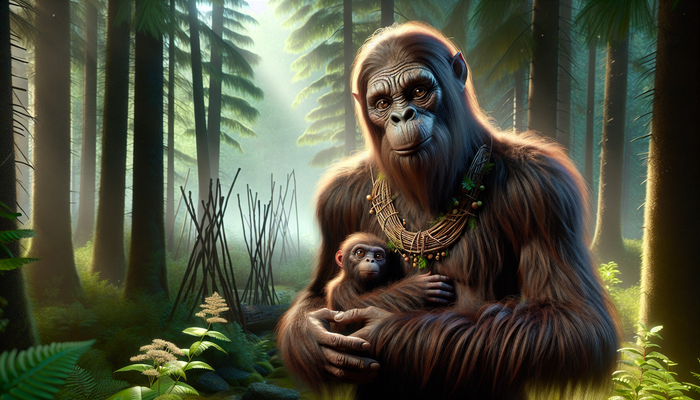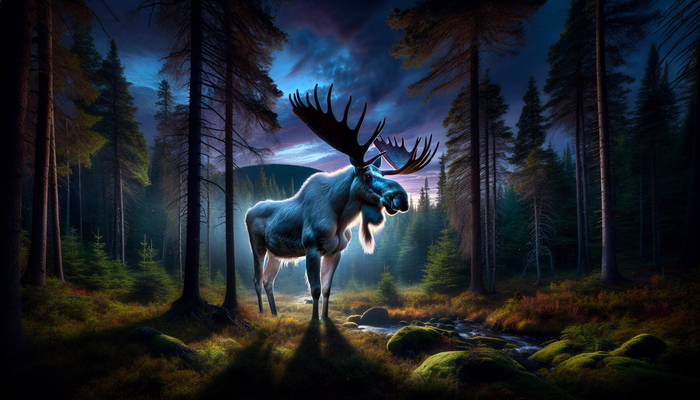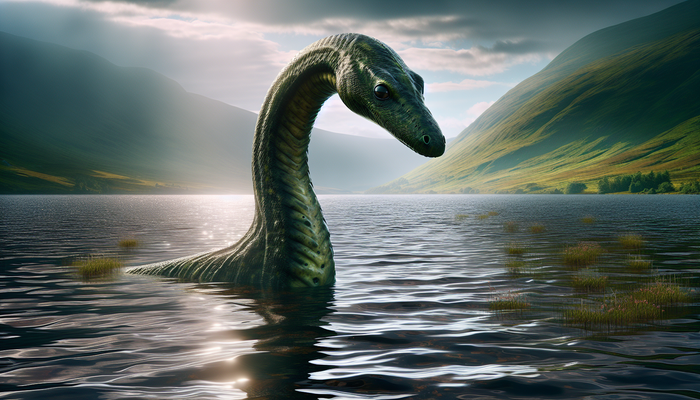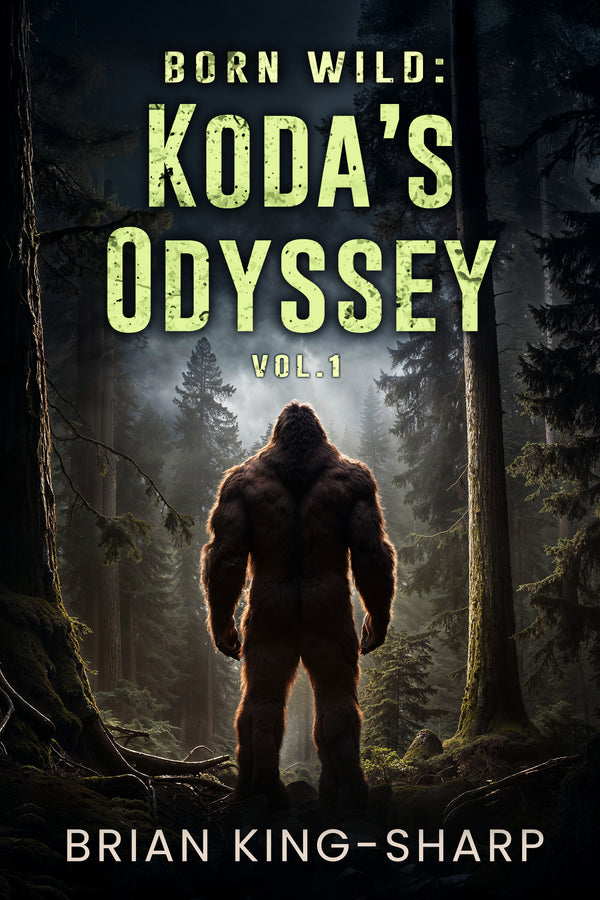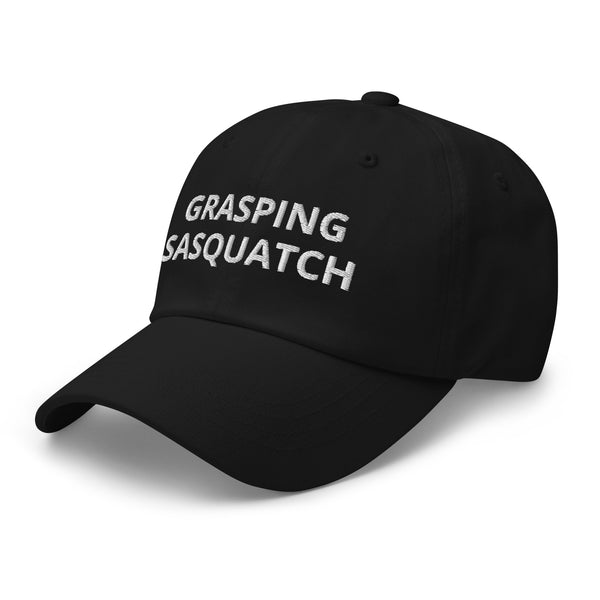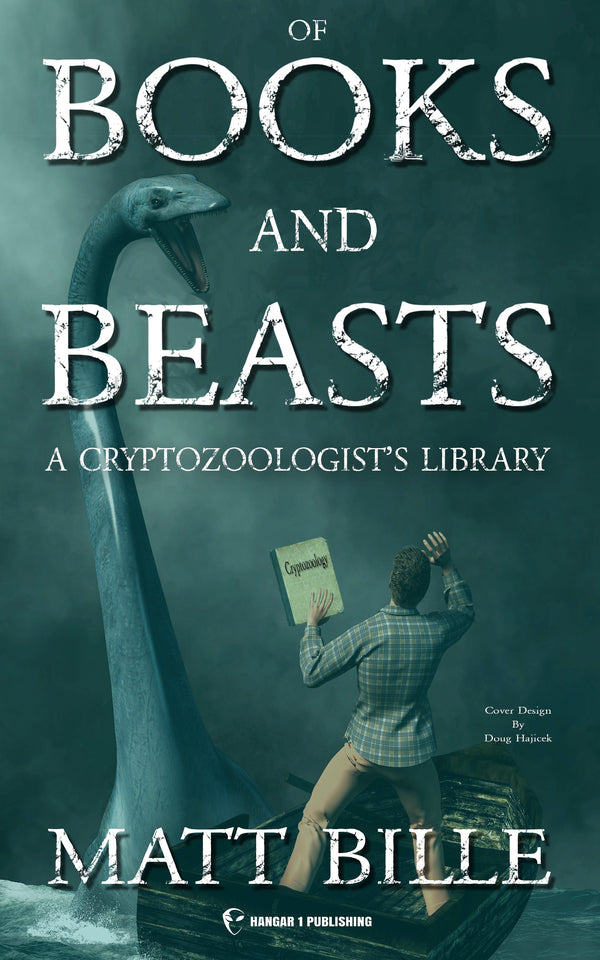Discovering North American Cryptids: Legends and Lore
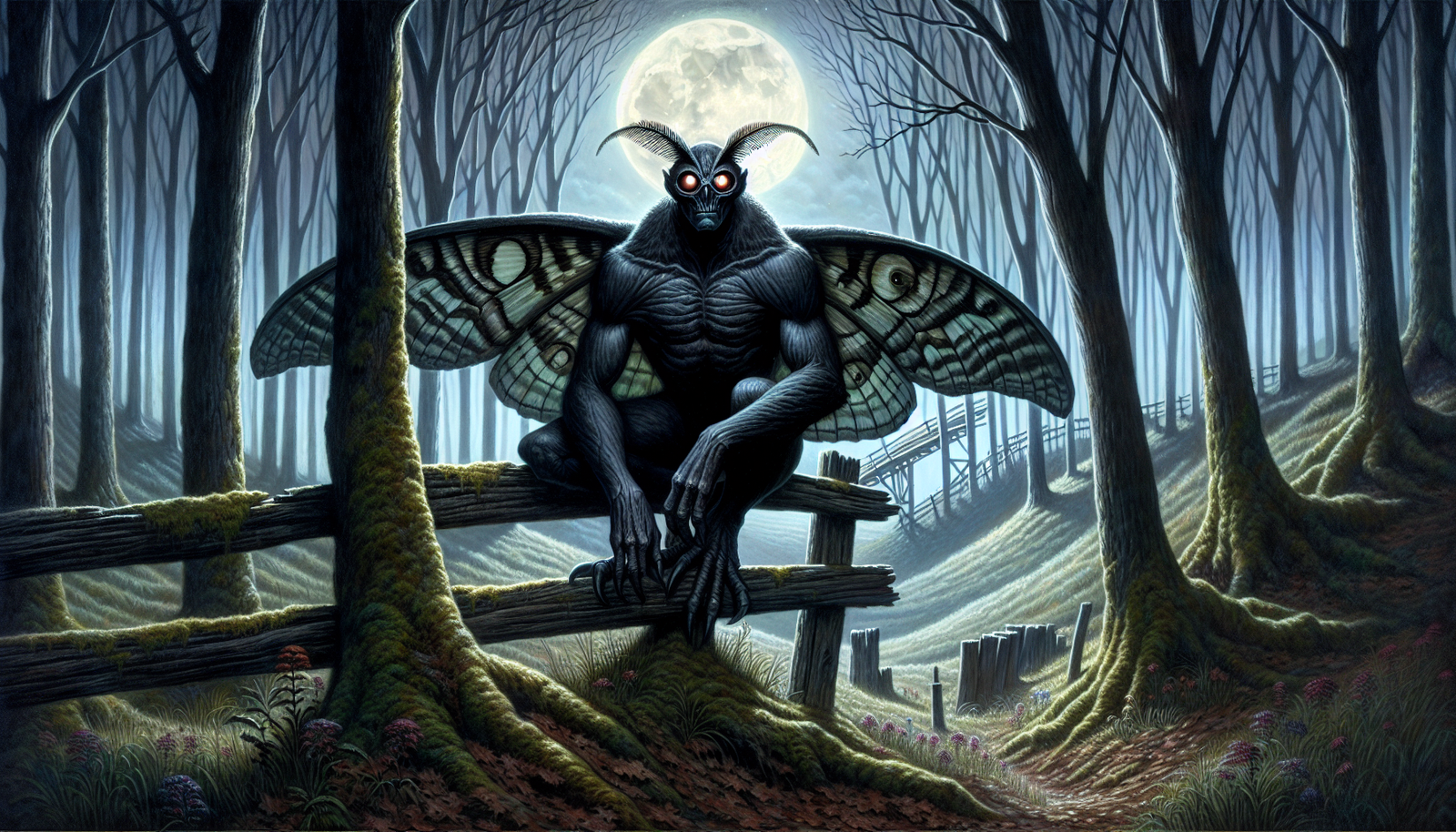
By Oliver Bennett, Cryptozoologist
In the shadowy corners of North America's vast wilderness, tales of mysterious creatures have captivated imaginations for generations. These elusive beings, known as cryptids, inhabit the blurred line between reality and folklore, challenging our understanding of the natural world. From the dense forests of the Pacific Northwest to the murky swamps of Florida, reports of unidentified animals continue to surface, sparking both skepticism and wonder.
Cryptids are animals or creatures whose existence is suggested through anecdotal evidence, folklore, or unverified sightings, yet remain unproven by scientific standards. Unlike mythical creatures born purely of imagination, cryptids often have roots in local histories and eyewitness accounts, making them compelling subjects for both believers and skeptics alike.
The study of these enigmatic beings falls under the umbrella of cryptozoology, a field that blends elements of biology, anthropology, and folklore. While often dismissed as pseudoscience by mainstream academia, cryptozoology has garnered a dedicated following of enthusiasts and researchers who seek to uncover the truth behind these legendary creatures.
The Nature of Cryptids
Cryptids occupy a unique space in the realm of the unexplained. Unlike purely mythical creatures such as unicorns or dragons, cryptids are grounded in the possibility of scientific discovery. They represent the tantalizing prospect that undiscovered species may still roam the Earth, eluding human detection.
The field of cryptozoology emerged in the mid-20th century, with researchers like Bernard Heuvelmans and Ivan T. Sanderson laying the groundwork for systematic study of reported cryptid sightings. These pioneers sought to apply scientific methodologies to the investigation of unknown animals, analyzing eyewitness accounts, physical evidence, and historical records to build cases for the existence of cryptids.
Cryptozoologists employ a variety of methods in their quest for evidence. Field research often involves expeditions to areas where cryptids have been reported, setting up camera traps, collecting physical samples, and interviewing witnesses. Analysis of footprints, hair samples, and other potential evidence is conducted using forensic techniques. However, the lack of verifiable physical evidence remains a significant challenge in establishing the existence of cryptids.
The study of cryptids intersects with multiple disciplines, including biology, anthropology, and folklore studies. By examining the cultural context in which cryptid legends arise, researchers gain insights into the beliefs, values, and environmental concerns of different communities. This interdisciplinary approach provides a richer understanding of the role cryptids play in shaping local identities and narratives.
Notable North American Cryptids
North America boasts a diverse array of cryptids, each with its own unique characteristics and cultural significance. From the towering Bigfoot to the elusive Chupacabra, these creatures have become icons of mystery and speculation. Let's explore some of the most prominent cryptids that have captured the public imagination.
Bigfoot (Sasquatch)
Perhaps the most famous of all North American cryptids, Bigfoot, also known as Sasquatch, is described as a large, hairy, ape-like creature standing between 6 to 10 feet tall. The legend of Bigfoot has deep roots in Native American folklore, with various tribes sharing stories of wild men or hairy giants inhabiting the forests long before European settlers arrived.
The modern Bigfoot phenomenon gained widespread attention in 1958 when a construction worker named Jerry Crew discovered enormous footprints at a work site in Bluff Creek, California. Crew made plaster casts of the prints, which were subsequently featured in local newspapers, coining the term "Bigfoot" and igniting public fascination with the creature.
Since then, thousands of Bigfoot sightings have been reported across North America, particularly in the Pacific Northwest. Witnesses describe a massive, bipedal creature covered in dark hair, with a distinctive gait and an overpowering odor. While skeptics argue that many sightings can be attributed to misidentification of known animals or hoaxes, believers point to the consistency of reports across different regions and time periods as evidence of Bigfoot's existence.
The search for Bigfoot has spawned numerous research organizations, such as the Bigfoot Field Researchers Organization (BFRO), which conducts expeditions and collects eyewitness accounts. Despite decades of searching, conclusive proof of Bigfoot's existence remains elusive. However, the creature's cultural impact is undeniable, inspiring countless books, documentaries, and even a popular beef jerky mascot.
Mothman
The legend of the Mothman emerged from Point Pleasant, West Virginia, in November 1966. Described as a winged humanoid with glowing red eyes, standing between 5 to 7 feet tall, the Mothman quickly became a source of terror and fascination for local residents.
The first reported sighting occurred on November 15, 1966, when two young couples driving near an abandoned TNT plant encountered a large creature with "eyes like glowing red coals." Over the next year, dozens of similar sightings were reported in the Point Pleasant area, often accompanied by strange lights in the sky and electrical disturbances.
The Mothman gained national attention following the tragic collapse of the Silver Bridge on December 15, 1967, which resulted in the deaths of 46 people. Many locals believed the Mothman's appearances were a harbinger of the disaster, leading to speculation about its supernatural nature.
In the years since, the Mothman has become an integral part of Point Pleasant's identity. The town hosts an annual Mothman Festival, attracting thousands of visitors each year. A statue of the creature stands in the town center, and the Mothman Museum showcases artifacts and memorabilia related to the legend.
The Mothman's legacy extends beyond Point Pleasant, inspiring books, films, and even academic studies on the psychological and sociological impacts of cryptid sightings on communities. Whether viewed as a supernatural entity, an undiscovered species, or a mass delusion, the Mothman remains a powerful symbol of the unknown.
Chupacabra
The Chupacabra, or "goat-sucker," is a relatively recent addition to the cryptid pantheon. First reported in Puerto Rico in 1995, this creature quickly captured the public imagination, spreading to other parts of Latin America and the southern United States.
Descriptions of the Chupacabra vary, but it is often portrayed as a reptilian or dog-like creature with spikes along its back, standing about 3 to 4 feet tall. Its name derives from its reported habit of attacking and draining the blood of livestock, particularly goats.
The first wave of Chupacabra sightings in Puerto Rico coincided with a series of mysterious animal deaths, where livestock were found exsanguinated with puncture wounds on their bodies. As news of these incidents spread, similar reports emerged in other countries, each adding new details to the Chupacabra mythos.
In the continental United States, particularly in Texas and other southwestern states, Chupacabra sightings often describe a more canine-like creature, leading some researchers to speculate that these reports may be misidentifications of coyotes or dogs with mange.
The Chupacabra has become a significant part of modern folklore, featured in numerous television shows, movies, and books. Its rapid rise to prominence demonstrates how quickly cryptid legends can spread in the age of mass media and internet communication.
Jersey Devil
The Jersey Devil, a legendary creature said to inhabit the Pine Barrens of southern New Jersey, has a history dating back to the 18th century. Descriptions of the creature vary, but it is often depicted as a flying biped with hooves, a goat-like head, bat wings, and a forked tail.
The most popular origin story of the Jersey Devil involves Mother Leeds, a woman said to have cursed her 13th child, proclaiming it would be the devil. According to legend, the child transformed into a monstrous creature upon birth, killing the midwife before escaping into the Pine Barrens.
Sightings of the Jersey Devil have been reported for centuries, with notable waves of encounters occurring in 1909 and 1951. These incidents led to school closures and heightened public fear, demonstrating the creature's impact on local communities.
The Jersey Devil has become an iconic figure in New Jersey folklore, inspiring numerous books, films, and even the name of the state's NHL team, the New Jersey Devils. The creature's legend is closely tied to the Pine Barrens themselves, a unique and somewhat mysterious ecosystem that has long captured the public imagination.
Skunk Ape
Florida's contribution to North American cryptozoology is the Skunk Ape, a Bigfoot-like creature known for its pungent odor. Described as a large, hairy, bipedal animal standing 6 to 7 feet tall, the Skunk Ape is said to inhabit the swamps and forests of the southeastern United States, particularly the Florida Everglades.
Sightings of the Skunk Ape date back to the 1960s, with witnesses reporting encounters with a large, ape-like creature emitting a strong, unpleasant smell reminiscent of rotten eggs or methane. The creature's reported habitat in swampy areas has led some researchers to speculate that its odor may be a result of spending time in stagnant water or methane-rich environments.
One of the most famous pieces of evidence for the Skunk Ape's existence is the "Myakka Skunk Ape Photograph," taken in 2000 by an anonymous woman who claimed the creature had been stealing apples from her backyard. The photograph shows a large, hairy figure with reddish-brown fur, although skeptics argue it could be a misidentified bear or a hoax.
The legend of the Skunk Ape has become intertwined with efforts to protect Florida's wetlands and wildlife. Some cryptozoologists argue that the creature could be an undiscovered primate species, highlighting the importance of preserving natural habitats that may harbor unknown animals.
Flatwoods Monster
The Flatwoods Monster, also known as the Braxton County Monster, burst onto the cryptozoological scene on September 12, 1952, in Flatwoods, West Virginia. This extraterrestrial-looking creature was reportedly encountered by a group of local residents who investigated a strange light that appeared to land in the hills near their town.
Witnesses described the Flatwoods Monster as a tall, humanoid figure with a spade-shaped head, glowing eyes, and a dark, metallic body. Some accounts mention clawed hands and a strong, sulfurous odor. The creature was said to emit a shrill hissing sound and glide rather than walk.
The incident gained national attention, with newspaper reports and radio broadcasts spreading the story across the country. While skeptics argue that the sighting can be explained as a misidentification of an owl or other natural phenomenon, combined with the excitement and fear of the witnesses, the legend of the Flatwoods Monster has persisted.
Today, the Flatwoods Monster is celebrated as part of local folklore, with an annual festival and various tourist attractions dedicated to the creature. The incident is often linked to the broader UFO phenomenon of the 1950s, reflecting the cultural anxieties and fascinations of the Cold War era.
Loveland Frogmen
The legend of the Loveland Frogmen originates from Loveland, Ohio, where multiple sightings of bizarre, amphibious creatures have been reported since 1955. These cryptids are described as bipedal, frog-like beings standing about 3 to 4 feet tall, with leathery skin and frog or lizard-like heads.
The first reported encounter with the Loveland Frogmen occurred in May 1955, when a businessman claimed to see three or four strange creatures gathered by the side of the road. He described them as having wrinkles on their heads and faces, and webbed hands and feet. One of the creatures allegedly held up a wand-like device that shot sparks.
Subsequent sightings, including two separate incidents involving police officers in 1972, have added to the Loveland Frogmen mythos. In one case, an officer reported shooting at one of the creatures, but subsequent searches of the area yielded no evidence.
The Loveland Frogmen have become a quirky part of local folklore, inspiring everything from humorous t-shirts to serious cryptozoological investigations. Some researchers speculate that the creatures could be misidentified exotic pets or unknown amphibian species, while skeptics argue that the sightings are likely hoaxes or misidentifications of ordinary animals.
Ozark Howler
The Ozark Howler is a cryptid reported to inhabit the remote regions of Arkansas, Missouri, Oklahoma, and Texas. Described as a large, cat-like creature with a thick, shaggy coat, the Ozark Howler is said to have prominent horns and glowing red eyes. Its most distinctive feature, however, is its chilling cry, often described as a combination of a wolf's howl and an elk's bugle.
Sightings of the Ozark Howler date back to the early 19th century, with Native American legends potentially referencing the creature even earlier. Witnesses often report encountering the Howler in heavily forested areas, particularly at night.
Some cryptozoologists speculate that the Ozark Howler could be an undiscovered species of big cat, possibly a remnant population of an extinct felid like the American lion. Skeptics, however, argue that sightings can be attributed to misidentifications of known animals such as black bears or cougars, combined with the power of suggestion and local folklore.
The legend of the Ozark Howler has become intertwined with the cultural identity of the Ozark region, reflecting the area's rugged terrain and rich folklore traditions. Whether real or imaginary, the Howler serves as a reminder of the mysteries that may still lurk in the remote corners of North America.
Batsquatch
Batsquatch is a relatively recent addition to the cryptid pantheon, with sightings primarily reported in the Pacific Northwest, particularly around Mount St. Helens in Washington state. As its name suggests, Batsquatch is described as a hybrid creature combining features of a bat and the legendary Sasquatch.
The first reported sighting of Batsquatch occurred in 1994, when a man driving near Mount St. Helens claimed his truck was approached by a large, winged creature with blue fur and a wolf-like face. The witness described the being as having a wingspan of around 50 feet and glowing eyes.
Subsequent reports have added to the Batsquatch lore, with descriptions varying but generally including features such as bat-like wings, primate-like body structure, and piercing eyes. Some accounts suggest the creature is capable of flight, while others describe it as more of a gliding animal.
The emergence of the Batsquatch legend following the 1980 eruption of Mount St. Helens has led some researchers to speculate about a possible connection between geological events and cryptid sightings. Skeptics, however, point out the lack of physical evidence and the similarity of Batsquatch descriptions to fictional creatures from popular culture.
Despite its relatively short history, Batsquatch has captured the imagination of cryptid enthusiasts and has been featured in various books and television programs about mysterious creatures. The legend continues to evolve, demonstrating the ongoing human fascination with the possibility of unknown animals inhabiting familiar landscapes.
Pope Lick Monster
The Pope Lick Monster, also known as the Goatman, is a legendary creature said to inhabit the area surrounding Pope Lick Creek and its railroad trestle, just outside of Louisville, Kentucky. This cryptid is typically described as having the torso of a man and the legs and head of a goat, sometimes with additional features such as fur, scales, or even horns.
According to local legend, the Pope Lick Monster uses various methods to lure unsuspecting victims onto the railroad trestle, including hypnosis, voice mimicry, or the promise of hidden knowledge. Once on the trestle, victims are said to meet their doom, either at the hands of the monster or by an oncoming train.
The origins of the Pope Lick Monster legend are unclear, with some versions claiming it is the result of a circus freak show accident, while others suggest it may be a twisted form of a satyr from Greek mythology. Regardless of its origins, the legend has had real-world consequences, with several accidents and deaths occurring on the trestle as thrill-seekers attempt to spot the creature or test their bravery.
The Pope Lick Monster has become a significant part of Louisville's local folklore, inspiring numerous stories, independent films, and even a play. The legend serves as a cautionary tale about the dangers of trespassing and risk-taking behavior, while also reflecting broader themes of urban legends and the human fascination with the monstrous and unknown.
The Role of Cryptids in Culture
Cryptids play a multifaceted role in North American culture, serving as sources of entertainment, subjects of scientific inquiry, and reflections of societal values and concerns. Their impact extends beyond mere folklore, influencing local economies, shaping community identities, and even contributing to conservation efforts.
Community Engagement and Festivals
Many communities have embraced their local cryptids, turning them into sources of pride and tourist attractions. Festivals celebrating these mysterious creatures have become popular events, drawing visitors from far and wide. The Mothman Festival in Point Pleasant, West Virginia, for example, attracts thousands of attendees each year with its mix of guest speakers, costume contests, and tours of alleged sighting locations.
These events not only boost local economies but also serve as platforms for storytelling and cultural exchange. They allow believers and skeptics alike to come together, sharing experiences and theories about the cryptids in question. Such gatherings foster a sense of community and preserve local legends for future generations.
Cryptids as Environmental Symbols
In many cases, cryptid legends are closely tied to specific geographical features or ecosystems. The Skunk Ape, for instance, is inextricably linked to the swamps and forests of the southeastern United States. As a result, these creatures often become de facto mascots for their habitats, raising awareness about local environmental issues.
Some researchers and conservationists have leveraged the popularity of cryptids to promote habitat preservation. The argument goes that if these elusive creatures do exist, protecting their potential habitats is crucial. Even for skeptics, the idea of preserving wilderness areas "just in case" can be a compelling argument for conservation.
Psychological and Social Implications
The enduring fascination with cryptids reveals much about human psychology and social dynamics. These creatures often embody our fears of the unknown or our hope for undiscovered wonders. They can serve as metaphors for societal anxieties, such as the fear of the wilderness in settled areas or concerns about rapid technological change.
Cryptid legends also reflect the values and beliefs of the communities that foster them. For example, the Wendigo of Algonquin-speaking peoples serves as a cautionary tale against greed and cannibalism, embodying cultural taboos and moral lessons.
The persistence of cryptid beliefs in the face of scientific skepticism raises interesting questions about the nature of belief and the role of evidence in shaping worldviews. For some, the search for cryptids represents a rejection of established scientific consensus and a desire for mystery in an increasingly explained world.
The Science of Cryptozoology
While cryptozoology is often dismissed as pseudoscience by mainstream academia, its practitioners argue that it plays a valuable role in pushing the boundaries of zoological knowledge. The history of zoology includes numerous examples of animals once thought to be mythical, such as the giant squid and the mountain gorilla, that were later confirmed to exist.
The Search for Evidence
Cryptozoologists employ a variety of methods in their quest for evidence of unknown animals. Field research often involves expeditions to areas where cryptids have been reported, using techniques such as camera traps, environmental DNA sampling, and witness interviews.
Physical evidence, when available, is subjected to rigorous analysis. Footprint casts, hair samples, and alleged cryptid remains are examined using forensic techniques. However, the lack of verifiable physical specimens remains a significant challenge for cryptozoology.
Technological advancements have opened new avenues for cryptid research. Thermal imaging cameras, drone surveys, and satellite imagery allow researchers to explore remote areas and gather data in ways previously impossible. Social media and online databases have also made it easier to collect and analyze reported sightings from around the world.
The Intersection of Folklore and Science
The study of cryptids often requires an interdisciplinary approach, combining elements of zoology, anthropology, psychology, and folklore studies. By examining the cultural context in which cryptid legends arise, researchers can gain insights into the beliefs, values, and environmental knowledge of different communities.
This holistic approach can yield valuable information even when the cryptids themselves remain unproven. For example, studies of Bigfoot legends among Native American tribes have provided insights into traditional ecological knowledge and historical land use patterns.
Cryptozoology's emphasis on eyewitness testimony and historical accounts also raises important questions about the nature of evidence in scientific inquiry. While anecdotal evidence is generally considered weak in the hierarchy of scientific proof, cryptozoologists argue that the sheer volume and consistency of cryptid reports warrant serious investigation.
Contributions to Conservation
Despite its controversial status, cryptozoology has made some contributions to wildlife conservation efforts. The search for cryptids often leads researchers into remote or understudied ecosystems, resulting in the discovery of new species or populations of known animals.
The popularity of cryptids can also be harnessed to promote conservation causes. The concept of "habitat conservation on the off-chance" has been used to argue for the protection of wilderness areas that may harbor unknown species. Even if the cryptids themselves are never found, this approach can lead to positive outcomes for biodiversity and ecosystem preservation.
Additional Resources
For those interested in exploring the world of North American cryptids further, a wealth of resources is available. Books such as "Abominable Science!: Origins of the Yeti, Nessie, and Other Famous Cryptids" by Daniel Loxton and Donald R. Prothero offer a skeptical but thorough examination of famous cryptids. For a more believer-oriented perspective, "The Field Guide to Bigfoot and Other Mystery Primates" by Loren Coleman and Patrick Huyghe provides an illustrated overview of alleged unknown hominids.
Documentaries like "The Mothman of Point Pleasant" and "Hunt for the Skinwalker" offer in-depth looks at specific cryptid legends and the communities they've impacted. Online resources such as the Bigfoot Field Researchers Organization (bfro.net) and the Centre for Fortean Zoology (cfz.org.uk) provide databases of sightings and ongoing research projects.
For those interested in the cultural aspects of cryptids, local folklore societies and museums often have exhibits or archives related to regional legends. The International Cryptozoology Museum in Portland, Maine, founded by renowned cryptozoologist Loren Coleman, houses an extensive collection of cryptid-related artifacts and artwork.
Academic journals such as the Journal of Scientific Exploration occasionally publish peer-reviewed articles on cryptozoological topics, offering a more scholarly approach to the subject. Additionally, many universities now offer courses in folklore studies or the anthropology of belief systems, which often touch on cryptid legends as part of broader cultural studies.
Whether approached as scientific mystery, cultural phenomenon, or simply as entertaining stories, North American cryptids continue to capture our imaginations. They remind us that even in our modern, highly mapped world, there may still be wonders waiting to be discovered – or at least wondered about.
From Bigfoot to UFOs: Hangar 1 Publishing Has You Covered!
Explore Untold Stories: Venture into the world of UFOs, cryptids, Bigfoot, and beyond. Every story is a journey into the extraordinary.
Immersive Book Technology: Experience real videos, sights, and sounds within our books. Its not just reading; its an adventure.


